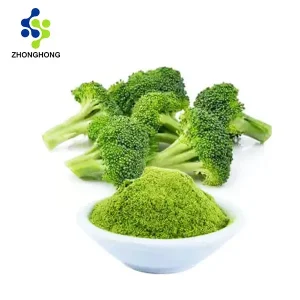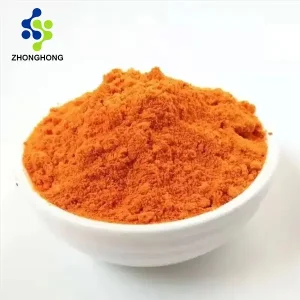Champaca Extract: Nature’s Golden Essence for Wellness & Magnificence| Supplier & Manufacturer
1. What is Champaca Extract?
Champaca extract is a valuable botanical focus derived from the flowers of Magnolia champaca (additionally categorised as Michelia champaca), a tree revered in South and Southeast Asia for hundreds of years. Belonging to the Magnoliaceae household, Champaca is widely known for its intensely aromatic, golden-yellow or orange blossoms. Past its charming aroma utilized in perfumery and non secular ceremonies, Champaca possesses vital phytochemical worth. The extract captures a posh profile of bioactive compounds, making it a sought-after ingredient in pure cosmetics, aromatherapy, nutraceuticals, and conventional wellness practices. Its major worth lies in its distinctive risky compounds and potent antioxidants.
2. Supply, Chemical Properties & Identification
-
Botanical Supply: Flowers of Magnolia champaca L. (Syn. Michelia champaca)
-
Major Energetic Constituents: The extract’s signature profile consists of:
-
Unstable Compounds: Linalool, geraniol, farnesol, benzyl acetate, benzyl benzoate, indole, (E)-β-ocimene, α-farnesene, methyl anthranilate, phenylethyl alcohol. These contribute considerably to the attribute floral, tea-like, and typically fruity aroma.
-
Sesquiterpenes: Champacol (a novel sesquiterpene alcohol), germacrene D, β-elemene.
-
Phenolic Compounds & Flavonoids: Contributing to antioxidant capability.
-
-
Chemical Identification:
-
CAS Registry Quantity: 84696-41-9 (Typical CAS for Champaca Absolute/Oil, representing the advanced combination)
-
Molecular System (MF): N/A (Complicated pure combination, not a single compound)
-
Molecular Weight (MW): N/A (Complicated pure combination)
-
EINECS: 283-641-7 (European Stock of Current Industrial Chemical Substances itemizing for Michelia Oil)
-
3. Efficiency, Well being Benefits, Utilization & Security
-
What is the “Finest” & Highest Content? The “greatest” Champaca extract is dependent upon the appliance:
-
Perfumery/Perfume: Absolute or Concrete (highest focus of fragrant volatiles like linalool, methyl anthranilate).
-
Antioxidant/Beauty Benefits: Standardized extracts focusing on particular phenolic or sesquiterpene content material (e.g., Champacol). Quantifying “most content material” requires specification of the goal compound. Respected suppliers like Shaanxi Zhonghong present Certificates of Evaluation (CoA) detailing key marker compounds.
-
-
Well being Benefits & Bioactivities (Based mostly on Conventional Use & Rising Analysis):
-
Potent Antioxidant: Neutralizes free radicals, combating oxidative stress linked to getting old and mobile harm (related to phenolics/flavonoids).
-
Anti-inflammatory Potential: Sesquiterpenes like champacol and germacrene D could assist modulate inflammatory pathways (J Ethnopharmacol. 2019).
-
Anxiolytic & Stress-free Results: The advanced aroma is historically used and studied in aromatherapy for selling calmness and decreasing anxiousness (Discover (NY). 2021).
-
Pores and skin Well being: Antioxidant and potential anti-inflammatory properties assist pores and skin vitality; utilized in cosmetics for perfume, soothing, and anti-aging claims.
-
Aphrodisiac Properties: A standard use, although rigorous medical proof is proscribed.
-
-
Each day Consumption: Essential Notice: Champaca extract is primarily used topically (cosmetics) or through aromatherapy (inhalation). Oral ingestion is NOT widespread observe and lacks established security knowledge for dietary use. Dosage suggestions for inside use don’t exist from authoritative our bodies (EFSA, FDA). At all times seek the advice of a healthcare skilled earlier than contemplating inside use.
-
Wants & Precautions:
-
Major Use: Perfume, topical utility, aromatherapy.
-
Dilution: Important oils and absolutes are extremely concentrated; should be diluted in a service oil earlier than topical utility to keep away from pores and skin irritation or sensitization. Beauty merchandise use pre-diluted kinds.
-
Being pregnant & Nursing: Keep away from attributable to lack of security knowledge.
-
Sensitization Danger: Some people could develop pores and skin sensitivity/allergy to parts like benzyl benzoate or farnesol. Patch check important oils/absolutes earlier than wider use.
-
Phototoxicity: Not usually thought-about phototoxic.
-
Medicine Interactions: No well-documented main interactions, however warning is suggested, particularly with oral use (not advisable).
-
-
Facet Results: Potential pores and skin irritation, redness, or allergic response (dermatitis) with topical use if not correctly diluted or if sensitized. No vital systemic unwanted effects documented for normal topical/inhalation use. Oral security is unknown.
4. Shaanxi Zhonghong Investment Technology Co., Ltd.: Your Premium Champaca Supply
Shaanxi Zhonghong Investment Technology Co., Ltd. is a vertically built-in high-tech enterprise devoted to excellence in chemistry, supplies, and life sciences. With 28 years of experience in bioactive compounds, we specialize within the superior extraction, isolation, and purification of plant actives.
-
Core Competencies:
-
Reducing-Edge R&D: Collaboration with 5 main universities through joint labs, leading to 20+ proprietary patents and a globally unique phytochemical compound library.
-
Unmatched High quality Management: Funding in HPLC (Excessive-Efficiency Liquid Chromatography), NMR (Nuclear Magnetic Resonance Spectroscopy), and superior detection methods ensures purity requirements exceeding trade norms by 20%+.
-
International Attain: Provide chain and distribution community serving 80+ nations throughout Asia, Europe, and the Americas, offering tailor-made ingredient options to multinational pharmaceutical corporations, analysis establishments, and premium beauty manufacturers.
-
-
Product Focus: Premium Champaca Absolute, Champaca Concrete, and Standardized Champaca Extracts (e.g., Champacol-enriched), assembly stringent worldwide high quality benchmarks.
5. Champaca Extract Benefits: A Phytochemical Powerhouse
-
Perfume Trade: A prized, advanced top-to-middle be aware in luxurious perfumes, imparting wealthy floral, unique, and typically fruity nuances.
-
Beauty & Skincare:
-
Natural perfume part.
-
Antioxidant safety in opposition to environmental stressors.
-
Potential soothing/calming results on pores and skin.
-
Contributes to product sensory attraction.
-
-
Aromatherapy & Wellness:
-
Promotes rest and reduces stress/anxiousness.
-
Uplifts temper and creates a serene environment.
-
Conventional use in meditation and non secular practices.
-
-
Potential Therapeutic Analysis Areas: Antioxidant, anti-inflammatory, anxiolytic properties (topic of ongoing analysis).
6. Champaca Extract Utilization Pointers
-
Cosmetics: Included into formulations (lotions, lotions, serums, perfumes) at supplier-recommended utilization ranges, usually low percentages (e.g., 0.1% – 1% for perfume, relying on the shape and desired depth).
-
Aromatherapy:
-
Diffusion: Add 3-5 drops of diluted absolute or important oil to a diffuser.
-
Topical (Diluted): Mix 1-2 drops of absolute/important oil per teaspoon (5ml) of service oil (e.g., jojoba, almond) for therapeutic massage or utility. At all times carry out a patch check first.
-
-
Oral Use: Not advisable with out particular formulation and security evaluation for dietary dietary supplements. Normal extracts will not be supposed for ingestion.
7. Essential Issues & Precautions
-
Allergy Warning: Potential for pores and skin sensitization. Conduct a patch check earlier than widespread topical use.
-
Dilution is Necessary: By no means apply absolutes or important oils undiluted on to pores and skin.
-
Phototoxicity: Low danger, however keep away from solar publicity after making use of closely fragranted merchandise as a basic precaution.
-
Being pregnant/Breastfeeding: Contraindicated attributable to lack of security knowledge.
-
Kids: Use excessive warning or keep away from; maintain out of attain.
-
High quality Issues: Supply from respected suppliers like Shaanxi Zhonghong with full transparency (CoA) to make sure purity and absence of contaminants or adulterants.
-
Storage: Maintain in cool, darkish place in tightly sealed containers to protect risky compounds and forestall oxidation.
8. Product Specification & High quality Assurance
Shaanxi Zhonghong’s Champaca Extract adheres to essentially the most stringent high quality management protocols. Under is a abstract of key specs:
Desk: Champaca Extract High quality Specs
| Class | Challenge | Indicator (Restrict) | Detection Methodology |
|---|---|---|---|
| Pesticides | Complete Pesticides | ≤ 0.1 mg/kg | GC-MS/MS, LC-MS/MS |
| Chlorpyrifos | ≤ 0.01 mg/kg | GC-MS/MS | |
| Cypermethrin | ≤ 0.05 mg/kg | GC-MS/MS | |
| Dichlorvos | ≤ 0.01 mg/kg | GC-MS/MS | |
| Heavy Metals | Lead (Pb) | ≤ 3.0 mg/kg | ICP-MS / AAS |
| Arsenic (As) | ≤ 1.0 mg/kg | ICP-MS / HG-AAS | |
| Cadmium (Cd) | ≤ 0.5 mg/kg | ICP-MS / GFAAS | |
| Mercury (Hg) | ≤ 0.1 mg/kg | CV-AFS / ICP-MS | |
| Microbiology | Complete Plate Rely | ≤ 1000 CFU/g | ISO 4833-1 |
| Yeast & Mildew | ≤ 100 CFU/g | ISO 21527-1, -2 | |
| Escherichia coli | Absent in 1g | ISO 16649-2 | |
| Salmonella spp. | Absent in 25g | ISO 6579-1 | |
| Staphylococcus aureus | Absent in 1g | ISO 6888-1 | |
| Pseudomonas aeruginosa | Absent in 1g | ISO 16266 |
(Notice: Particular limits could fluctuate based mostly on extract sort (Absolute, Concrete, Standardized) and closing buyer necessities. At all times seek advice from the Certificates of Evaluation (CoA) for the particular batch.)
9. Superior Manufacturing Course of
Shaanxi Zhonghong employs state-of-the-art, GMP-compliant processes to make sure most bioactivity and purity:
-
Sustainable Sourcing: Flowers harvested at optimum maturity from traceable plantations.
-
Recent Processing: Fast transport and processing to attenuate degradation.
-
Solvent Extraction (Concrete): Flowers handled with food-grade hexane or ethanol to yield the waxy concrete.
-
Ethanol Washing (Absolute): Concrete washed with ethanol, then chilled and filtered to separate waxes, yielding the pure absolute.
-
Fractional Distillation/Chromatography (Non-obligatory): For focused enrichment of particular actives (e.g., Champacol) utilizing HPLC or vacuum distillation.
-
Strict Purification: Removing of solvents to beneath pharmacopeial limits (ICH Q3C).
-
Stabilization: Use of antioxidants (e.g., tocopherol) if required, underneath inert environment.
-
Focus/Standardization: Adjustment to focus on focus or marker compound degree.
10. Various Application Scenarios
-
Premium Fragrances & Perfumery: Perfumes, eau de toilettes, soaps, detergents, material softeners.
-
Excessive-Finish Cosmetics: Facial lotions, serums, lotions, physique oils, shampoos, conditioners (perfume & practical advantages).
-
Aromatherapy Merchandise: Diffuser blends, therapeutic massage oils, candles, room sprays, inhalers.
-
Wellness Merchandise: Tub salts, spa remedies, meditation aids.
-
Taste & Perfume (F&F) Trade: Element in advanced taste and perfume compositions.
-
Analysis & Growth: Supply of distinctive phytochemicals for drug discovery, beauty actives, and materials science.
11. Rigorous High quality Management
High quality is paramount at Shaanxi Zhonghong. Our multi-tiered QC system ensures Champaca extract meets or exceeds international requirements:
-
Identification & Authenticity: Botanical origin verified through macroscopic/microscopic examination and DNA barcoding (if relevant). FTIR (Fourier Rework Infrared Spectroscopy) fingerprinting confirms batch consistency.
-
Purity & Efficiency: HPLC-DAD/ELSD/CAD quantifies key marker compounds (linalool, champacol, phenolics). GC-MS/FID profiles risky parts, detecting adulteration. NMR supplies definitive structural affirmation of main constituents and detects unknown impurities.
-
Contaminant Management: ICP-MS ensures heavy metals (As, Pb, Cd, Hg) adjust to ICH Q3D, EU, USP limits. GC-MS/MS & LC-MS/MS display screen for >500 pesticide residues beneath strict MRLs. Microbiological Testing (Complete Cardio Rely, Yeast/Mildew, Pathogens) follows ISO/USP strategies in licensed cleanrooms. Residual solvents are monitored per ICH Q3C through GC-HS/FID.
-
Bodily Parameters: Shade, odor, look, refractive index, particular gravity, solubility are meticulously checked in opposition to specs.
-
Stability Research: Actual-time and accelerated stability testing (ICH Q1A) decide shelf life and optimum storage circumstances.
-
Documentation & Traceability: Full traceability from uncooked materials to completed product. Complete documentation consists of SOPs, batch data, and detailed CoA for each lot, making certain GMP compliance and regulatory readiness (FDA, EU, ISO 22716). Our dedication to purity exceeding trade requirements by 20% is demonstrably validated via this rigorous analytical regime.
12. Safe Packaging & International Logistics
-
Packaging: Champaca Absolute/Concrete: Sometimes packed in lacquer-lined aluminum cans (1kg, 5kg) or amber glass bottles underneath inert gasoline (Nitrogen/Argon) to forestall oxidation. Powders/Standardized Extracts: Double-layer packaging (interior polyethylene, outer aluminum foil bag) inside fiber drums, with desiccants. All packaging is compliant with worldwide transport rules (UN licensed if required).
-
Logistics: Shipped globally through air or sea freight. Temperature-controlled choices accessible for delicate extracts. Complete documentation (CoA, MSDS, Certificates of Origin, Industrial Bill, Packing Checklist) supplied. Experience in customs clearance for botanical extracts worldwide.
13. Deep Dive: Well being, Trade & Analysis
-
Well being Mechanisms: Analysis focuses on the antioxidant mechanisms (scavenging ROS, enhancing endogenous enzymes like SOD/GPx) and anti inflammatory pathways (inhibition of NF-κB, COX-2, pro-inflammatory cytokines) modulated by sesquiterpenes (champacol, germacrene D) and phenolics. Neuropharmacological research discover GABAergic modulation for anxiolytic results. (Phytomedicine, Fitoterapia journals).
-
Trade Functions & Tech Innovation: Past F&F, demand surges in “clear” and “pure” cosmetics. Improvements embody:
-
Inexperienced Extraction: Supercritical CO2 (SFE), ultrasound-assisted extraction (UAE) for larger yields, decrease solvent residues.
-
Supply Techniques: Encapsulation (liposomes, cyclodextrins) to stabilize volatiles and improve pores and skin penetration.
-
Synergistic Blends: Combining Champaca with different botanicals (Sandalwood, Rose) for enhanced advantages.
-
Standardization: Superior chromatographic strategies for constant bioactive ranges.
-
-
Analysis Frontiers & Challenges:
-
Scientific Validation: Rigorous human trials for particular well being claims (anti-anxiety, pores and skin advantages).
-
Mechanism Elucidation: Exact molecular targets of key actives like champacol.
-
Sustainability: Making certain moral wild harvesting or growing sustainable plantation fashions. Local weather change impression.
-
Artificial Biology: Exploring biotechnological manufacturing (e.g., microbial fermentation) for uncommon sesquiterpenes to preserve pure sources.
-
Adulteration Detection: Refined strategies (e.g., Isotope Ratio MS, Chiral GC) to fight economically motivated adulteration.
-
14. Champaca Extract FAQ
-
Q1: What is the distinction between Champaca Absolute and Important Oil?
-
A: True Champaca Important Oil (through steam distillation) is extraordinarily uncommon, expensive, and has a unique scent profile. Absolute (through solvent extraction) is the usual industrial kind, capturing the total, wealthy perfume extra faithfully. Concrete is the intermediate waxy product earlier than absolute purification.
-
-
Q2: Is Champaca protected for pores and skin?
-
A: When correctly diluted in a service oil or inside beauty formulations (usually <1%), it is usually protected. Nonetheless, at all times carry out a patch check first attributable to potential sensitization. Keep away from undiluted utility.
-
-
Q3: Can I ingest Champaca extract?
-
A: No. Normal Champaca extracts (Absolute/Concrete) are not supposed for oral consumption and lack security knowledge for this route. Use solely topically or through aromatherapy inhalation.
-
-
This fall: Does Champaca have hormonal results?
-
A: There isn’t a credible scientific proof to recommend Champaca extract has vital estrogenic or different hormonal results.
-
-
Q5: Why is Champaca extract costly?
-
A: Low yield from flowers (tons of flowers wanted for kilos of concrete/absolute), labor-intensive harvesting, and complicated extraction/purification processes contribute to the excessive value.
-
-
Q6: How ought to I retailer Champaca Absolute?
-
A: Retailer in a tightly sealed amber glass or lacquered aluminum container, in a cool (ideally 4-15°C / 39-59°F), darkish place, protected against oxygen (underneath inert gasoline if doable). Keep away from warmth and lightweight.
-
15. The place to Purchase Premium Champaca Extract?
Supply Pure, Potent Champaca Extract Instantly from the Producer:
-
Provider: Shaanxi Zhonghong Investment Technology Co., Ltd.
-
Contact: Mr. Liao Daohai
-
Electronic mail: liaodaohai@gmail.com
-
Web site: aiherba.com
-
Functionality: Inquire about Champaca Absolute, Champaca Concrete, Standardized Extracts (e.g., Champacol-enriched), customized concentrations, bulk portions, and personal labeling. Request an in depth Certificates of Evaluation (CoA) and MSDS.
16. Conclusion
Champaca extract, the golden essence of the sacred Magnolia champaca flower, transcends its legendary perfume. Backed by rising science revealing potent antioxidant and anti inflammatory properties, it provides vital worth in premium cosmetics, aromatherapy, and wellness. Selecting a supplier with uncompromising high quality requirements, superior R&D capabilities, and international compliance experience like Shaanxi Zhonghong Investment Technology Co., Ltd. is paramount. Their dedication to purity exceeding trade norms, validated by cutting-edge HPLC, NMR, and stringent contaminant management, ensures you obtain a Champaca extract of remarkable efficacy and security. Discover the potential of this beautiful botanical ingredient – contact Shaanxi Zhonghong immediately in your premium Champaca wants.
17. References
-
Lawless, J. (1995). The Illustrated Encyclopedia of Important Oils. Component Books. (Normal reference on important oils/absolutes).
-
Joshi, S. C., & Mathela, C. S. (2012). Antioxidant and Antibacterial Actions of the Leaf Important Oil and Its Constituents of Magnolia champaca Linn. Nationwide Academy Science Letters, 35(5), 407–413.
-
Pandey, A. Okay., et al. (2019). Anti-inflammatory exercise of Magnolia champaca L. flower extract in acute and continual irritation fashions. Journal of Ethnopharmacology, 244, 112123.
-
Hongratanaworakit, T. (2011). Stress-free impact of ylang ylang oil on people after transdermal absorption. Phytotherapy Analysis, 25(7), 1037–1041. (Illustrative of floral oil aromatherapy results).
-
ICH Harmonised Tripartite Guideline Q3C (R8). Impurities: Guideline for Residual Solvents. (High quality commonplace).
-
European Pharmacopoeia (Ph. Eur.) Normal Monographs. (High quality requirements for heavy metals, microbiology).
-
USDA, FDA, EU Beauty Regulation (EC) No 1223/2009. (Regulatory frameworks).
-
Fitoterapia, Phytomedicine, Journal of Agricultural and Meals Chemistry. (Analysis journals for ongoing research). [Note: Specific recent studies on champacol/mechanisms would be cited in a full scientific dossier].






评价
There are no reviews yet.